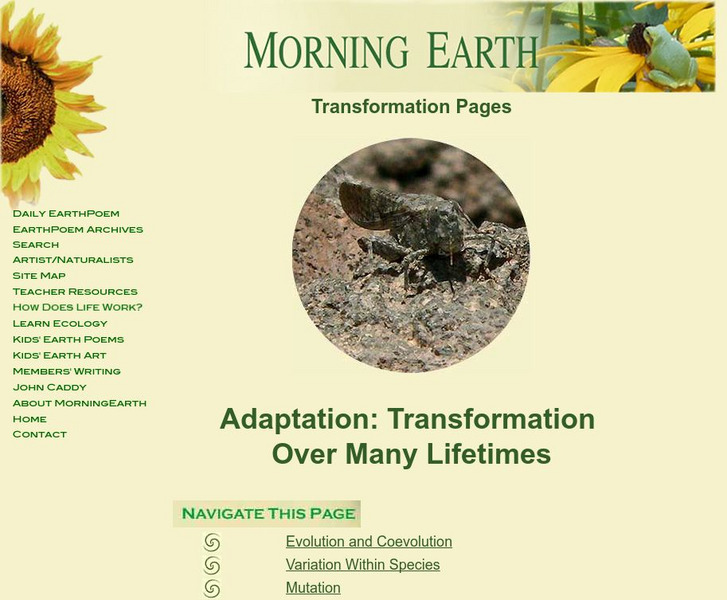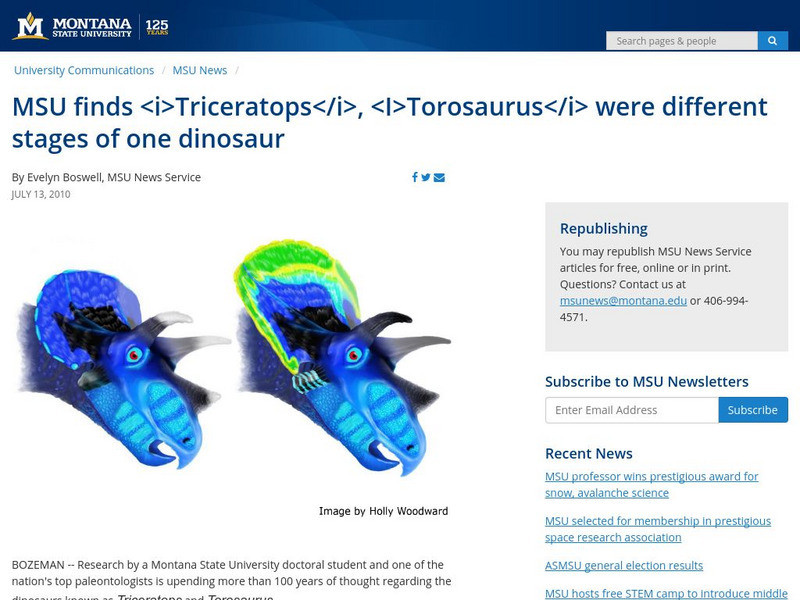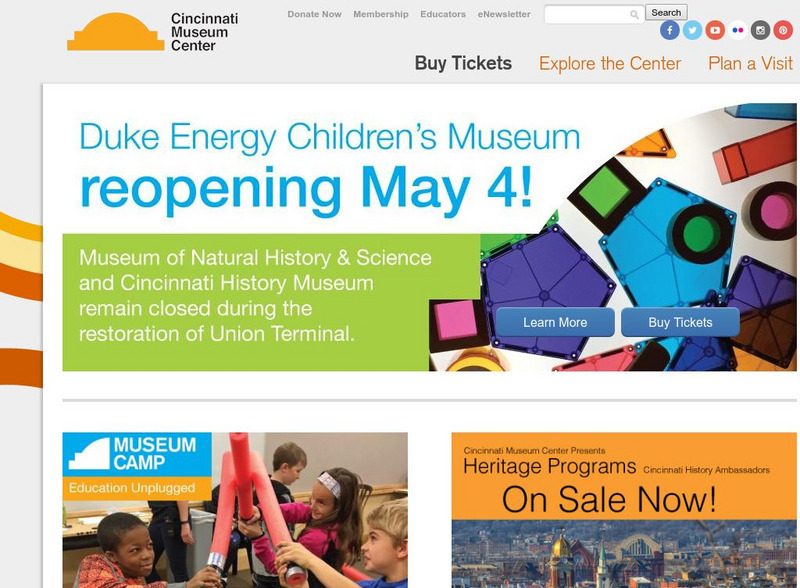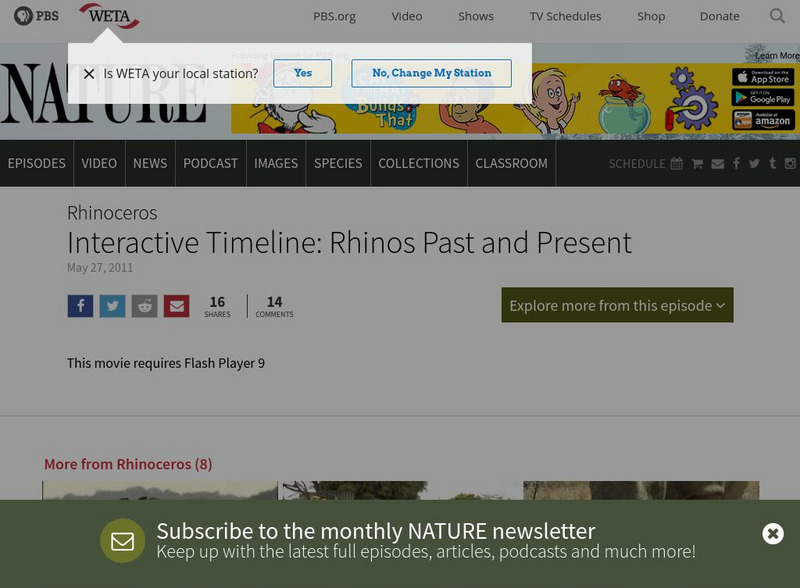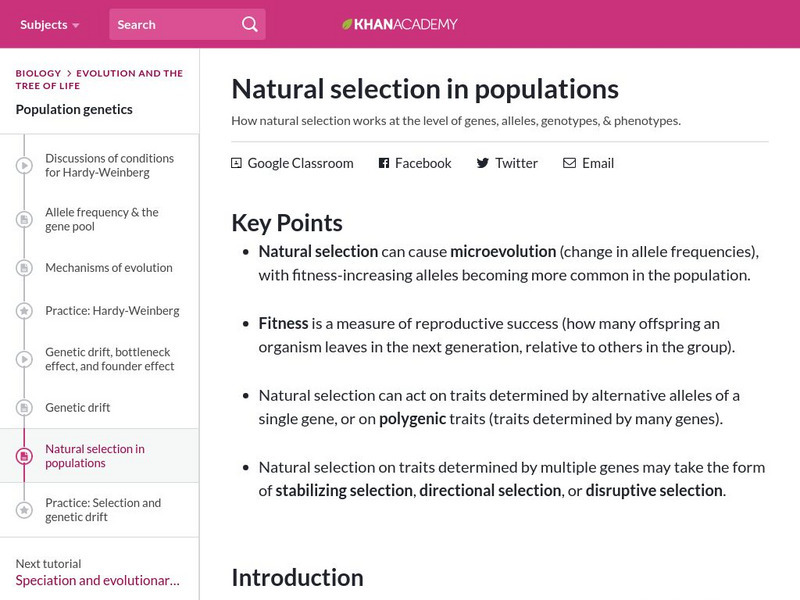Natural History Museum
Natural History Museum: Evolution
As part of a larger online exhibit answering the question, What is evolution, this site examines the specific theory of evolution with immediate attention given to exploring and defining morphs.
Morning Earth
All Lives Interlive: Over Many Lifetimes: Adaptation
The tutorial explores adaptation. Topics examined are evolution, co-evolution, variation within species, and mutation. Definitions, examples, and pictures on the concept are included.
National Health Museum
Nhm: Amino Acid Sequences Show Evolution
This lesson plan focuses on differences in the amino acid sequence of hemoglobin and myoglobin proteins. They use the number of differences to create a phylogenetic tree.
National Health Museum
Access Excellence: Wolf Pack in a Bottle: Dna Simulation
This lesson plan can be used to illustrate the principle of electrophoresis without the equipment. Paper chromatography can be used to separate dye just like electrophoresis will separate DNA. The lab also covers DNA analysis for an...
National Health Museum
Access Excellence: Molecular Biology/primate Phylogeny
This lesson plan involves comparison of amino acids to create a phylogenetic tree of primates. Learners will also use other species information to draw conclusions about evolutionary relationships.
National Health Museum
Access Excellence: Hardy Weinberg Equilibrium
This site explores what Hardy-Weinberg Equilibrium is, and how teachers can explore this topic in their classrooms. Content includes background information on this topic, as well as numerous learning activities.
PBS
Pbs Teachers: Scientific American: Science Safari: The First People
Emulate the work of archaeologists in South Africa attempting to solve the riddles of human evolution by inferring a person's height from the length of one bone. Identify and communicate present-day rituals through ancient art techniques.
University of California
Understanding Evolution: Microevolution
Get an overview of the process of microevolution.
University of California
Understanding Evolution: Speciation
Explore the evolutionary process of speciation.
Sophia Learning
Sophia: Evolution: Lesson 3
This lesson will introduce the concept of evolution and describe how and why organisms evolve.
CK-12 Foundation
Ck 12: Principles of Biology
[Free Registration/Login may be required to access all resource tools.] Explains the four principles that unify biology - cell theory, gene theory, homeostasis, and evolution.
Other
Msu News: Msu Finds Triceratops, Torosaurus Were Different Stages of Dinosaur
Two paleontologists from Montana State University, John Scannella and Jack Horner, discuss their newly released theory that Triceratops and Torosaurus were actually the same dinosaur but at different stages of their life cycle. [Date of...
Sophia Learning
Sophia: 7 Characteristics of Life: Lesson 2
This lesson will introduce the 7 characteristics of all living things. It is 2 of 4 in the series titled "7 Characteristics of Life."
Other
Cincinnati Museum Center
This site describes the Museum of Natural History and Science in detail and provides links to other programs and exhibits offered.
PBS
Pbs: Nature: Rhinoceros
An interactive timeline describing in both pictures and words the rhinoceroses from 50 million years ago to today. Learn how loss of habitat, poaching, and captivity has changed the rhino population over time.
Scientific American
Scientific American: 50 Years Ago: A Witness at the Scopes Trial
A lengthy article from Scientific American recounting the expert testimony of Fay-Cole Cooper, a professor at the University of Chicago, who supported the idea of evolution in the Scopes Monkey Trial.
CK-12 Foundation
Ck 12: Biology: Evolution of Life
[Free Registration/Login may be required to access all resource tools.] Covers the evolution of life.
CK-12 Foundation
Ck 12: Biology: Fish Evolution and Ecology
[Free Registration/Login may be required to access all resource tools.] Covers the evolution and ecology of fish.
CK-12 Foundation
Ck 12: Biology: Forces of Evolution
[Free Registration/Login may be required to access all resource tools.] Describes three of the four forces of evolution: mutation, gene flow, and genetic drift.
Khan Academy
Khan Academy: Natural Selection in Populations
How natural selection works at the level of genes, alleles, genotypes, & phenotypes.
Khan Academy
Khan Academy: Species & Speciation
Find out what defines a species, and learn how new species can arise from existing species.
Khan Academy
Khan Academy: Phylogenetic Trees
Learn what a phylogenetic tree is, Learn how to read phylogenetic trees and determine which species are most related.
Khan Academy
Khan Academy: Building a Phylogenetic Tree
Understand the logic behind phylogenetic trees. Learn how to build a tree using data about features that are present or absent in a group of organisms.
CPALMS
Florida State University Cpalms: Florida Students: Evolution: Examining the Evidence
Strengthen understanding of how different types of scientific evidence support the theory of evolution, including direct observation, fossils, DNA, biogeography, and comparative anatomy and embryology.



